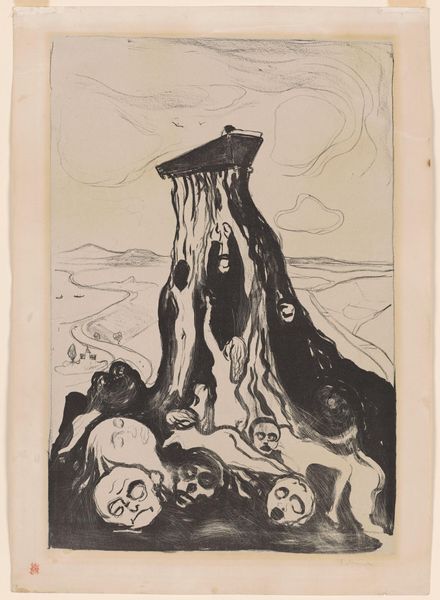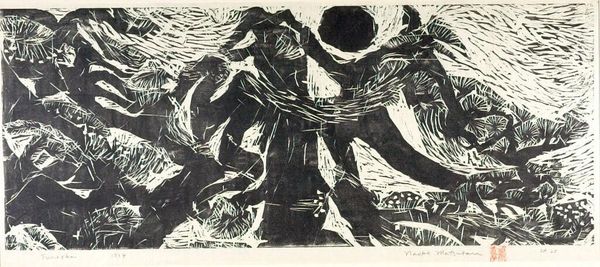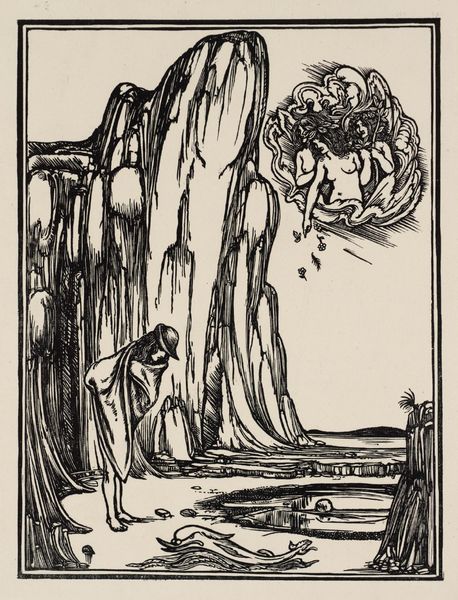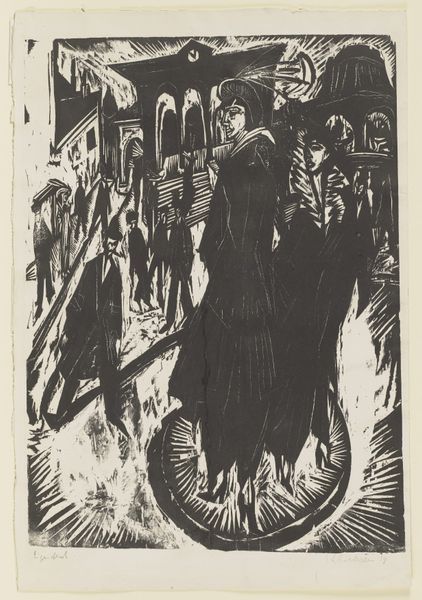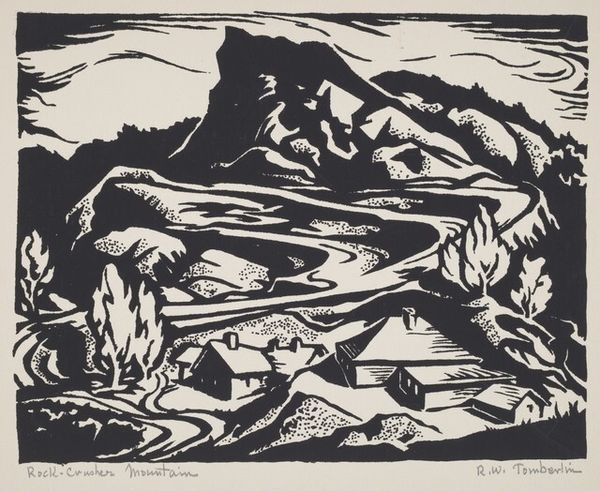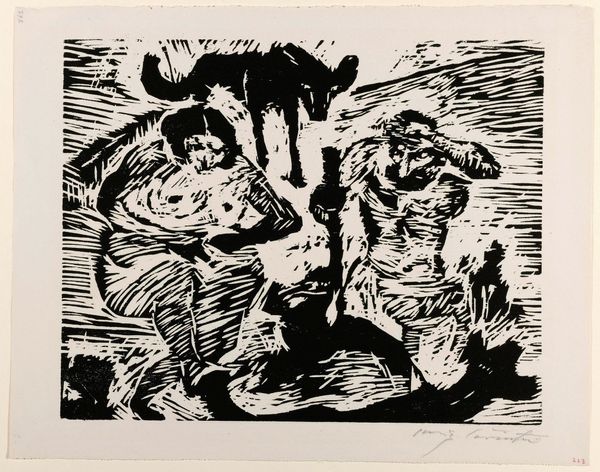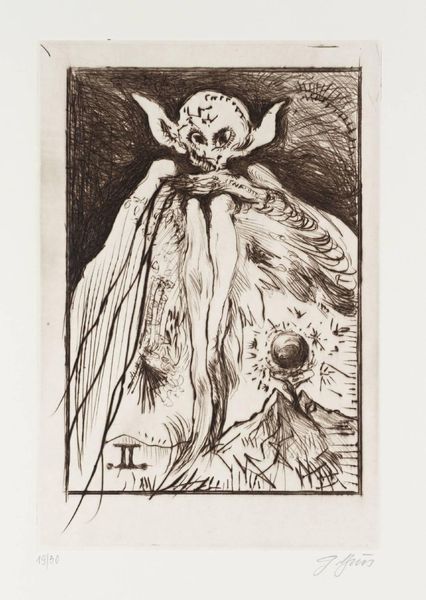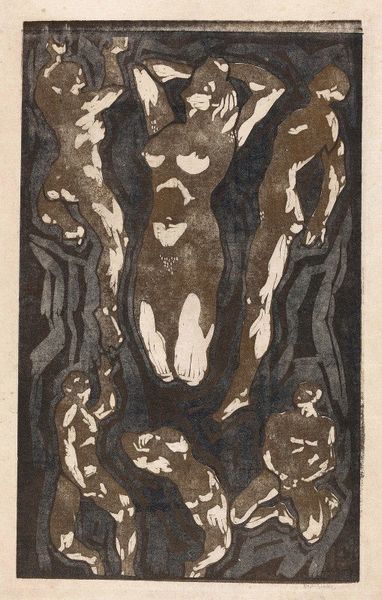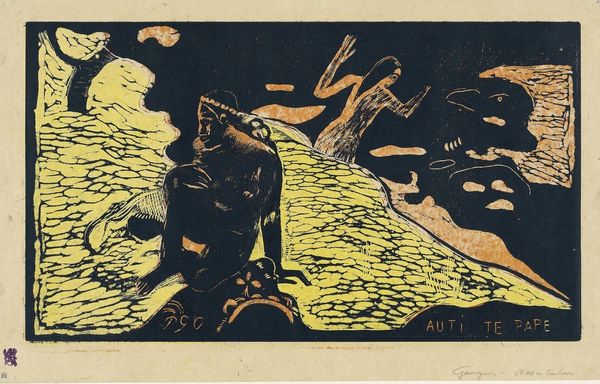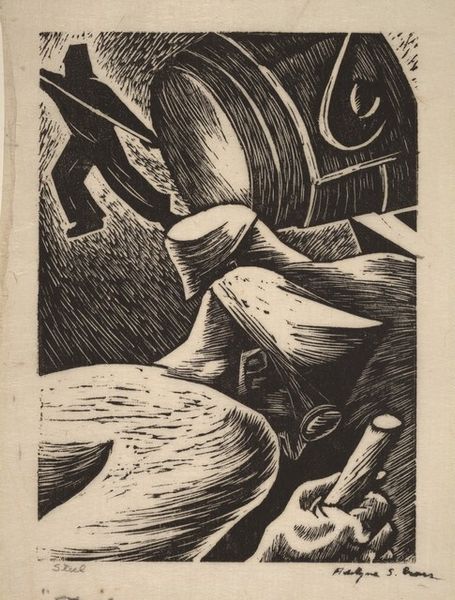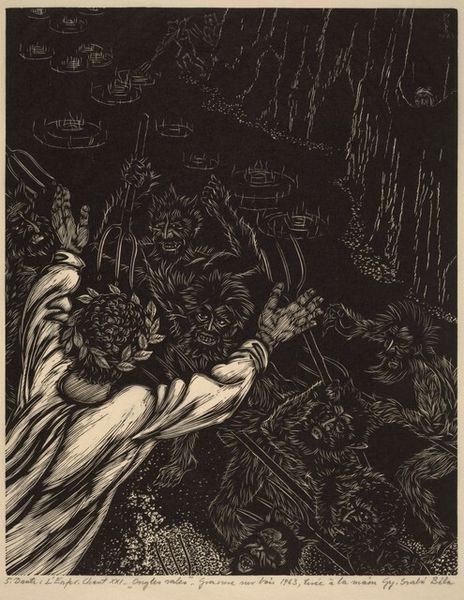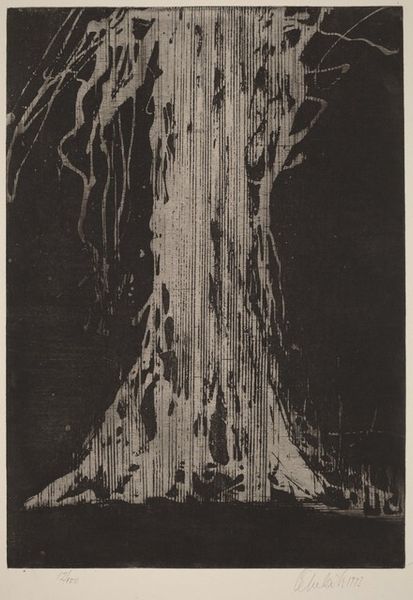
Copyright: Public Domain: Artvee
Editor: So, here we have Edvard Munch's "Funeral March," created in 1986 using ink and printmaking techniques. It's intensely dark and morbid, with figures emerging from what appears to be a tomb or a volcanic flow. What do you make of it? Curator: What I see is pure Munch, channeling the raw emotion of the subconscious. It’s like he’s giving form to the dread we all feel, the ever-present specter of mortality, with that haunting procession and those ghastly figures clambering out. The landscape is almost secondary, isn’t it? Merely a stage for this unfolding drama of death and perhaps… rebirth? Do you feel a glimmer of hope in the distance? Editor: Hope? It’s difficult to see past the… well, the pile of heads! But I see what you mean. There is a sort of expansive landscape contrasting the darkness in the foreground. Curator: Yes! Munch understood the power of contrast, not just visually, but emotionally. This interplay suggests the cyclical nature of life and death. Look closely – doesn't the figure on top, presiding over the scene, almost resemble Munch himself? Editor: It kind of does! It's perched atop the flow almost like a… judge? Curator: Perhaps an observer, detached yet undeniably implicated. He's not just documenting the scene; he’s part of it, wrestling with its meaning, like we all are. The personal is political, and the morbid is strangely… vital. It’s funny – an artist can bring something this bleak into the world and it can fill you with life. What a strange and beautiful job they have! Editor: Absolutely. It’s fascinating to consider that darkness can spark so much thought and feeling. Curator: Exactly! Art as a memento mori, but also as a celebration of existence. Makes you want to go outside and dance in the sunlight, doesn't it? Or at least grab a coffee.
Comments
No comments
Be the first to comment and join the conversation on the ultimate creative platform.
